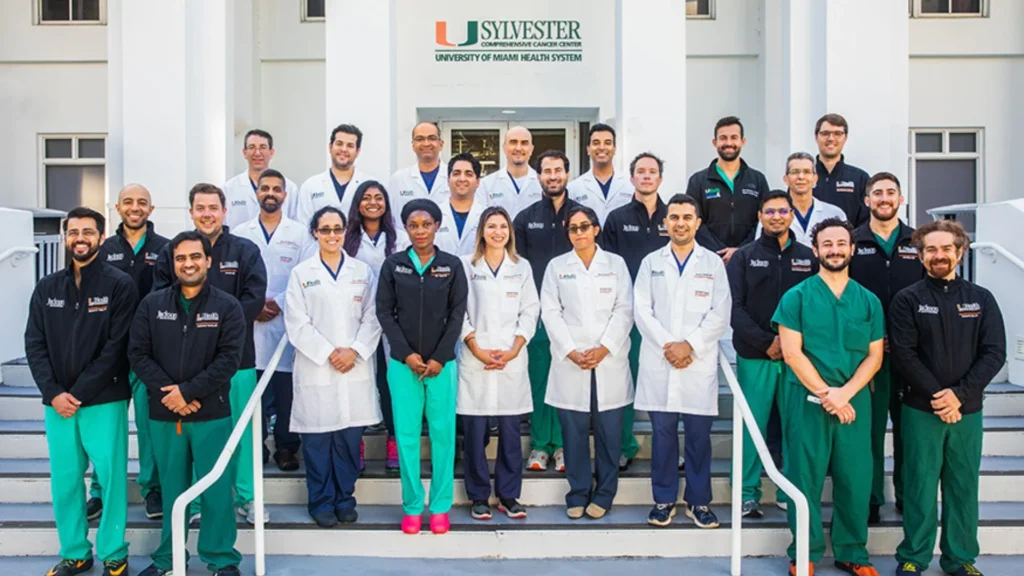University of Miami Interventional Radiology
Interventional radiology (IR) is a cutting-edge medical specialty that utilizes imaging techniques to guide minimally invasive surgical procedures. The University of Miami’s Interventional Radiology department stands out as a leader in this field, offering state-of-the-art treatments, pioneering research, and comprehensive training programs. This article delves into the intricacies of the University of Miami’s Interventional Radiology department, exploring its history, academic programs, clinical services, research contributions, and its overall impact on the field of medicine.University of Miami Interventional Radiology
History of Interventional Radiology at the University of Miami
Founding and Evolution
The University of Miami’s Interventional Radiology department has a rich history dating back to its inception. Established in the early 1980s, the department was among the first to recognize the potential of image-guided procedures. Initially, the focus was on diagnostic imaging, but with technological advancements and growing expertise, the department expanded its capabilities to include a wide range of interventional procedures.
Milestones and Achievements
Over the years, the University of Miami’s Interventional Radiology department has achieved numerous milestones. These include the development of innovative techniques, the introduction of advanced imaging modalities, and significant contributions to clinical research. The department has also been instrumental in training several generations of interventional radiologists who now practice across the globe.
Academic Programs
Residency Program
The University of Miami offers a comprehensive Interventional Radiology residency program designed to provide trainees with the knowledge, skills, and experience necessary to excel in the field. The program is structured to include rotations in various subspecialties, including vascular interventions, oncology, and neurointerventions, among others.
Curriculum and Training
The residency curriculum combines didactic learning with hands-on training. Residents participate in weekly lectures, case discussions, and journal clubs, ensuring a thorough understanding of both theoretical and practical aspects of interventional radiology. Hands-on training is provided through supervised procedures in the state-of-the-art IR suites, allowing residents to gain proficiency in a wide range of interventions.
Mentorship and Faculty
The faculty at the University of Miami’s Interventional Radiology department are renowned experts in their fields. They provide mentorship and guidance to residents, fostering an environment of learning and professional growth. The faculty’s commitment to education is evident through their involvement in national and international conferences, publications, and continued medical education.
Fellowship Program
In addition to the residency program, the University of Miami offers fellowship opportunities in various sub-specialties of Interventional Radiology. These fellowships are designed for those who have completed a residency and seek advanced training in specific areas such as interventional oncology, neurointerventions, or pediatric interventions.
Specialized Training
Fellows receive specialized training tailored to their chosen subspecialty. This includes advanced procedural training, participation in clinical research projects, and involvement in multidisciplinary teams. The fellowship program aims to produce highly skilled and knowledgeable interventional radiologists who are prepared to lead and innovate in their respective fields.

Continuing Medical Education
The University of Miami is committed to lifelong learning and offers numerous continuing medical education (CME) opportunities for practicing interventional radiologists. These include workshops, seminars, and online courses designed to keep practitioners up-to-date with the latest advancements and best practices in the field.
Clinical Services
Diagnostic Imaging
The Interventional Radiology department at the University of Miami utilizes advanced diagnostic imaging techniques to guide procedures and ensure precision. This includes the use of fluoroscopy, ultrasound, computed tomography (CT), and magnetic resonance imaging (MRI). These imaging modalities allow for accurate diagnosis and effective treatment planning.
Imaging Techniques
- Fluoroscopy: Real-time X-ray imaging that guides catheter placement and other interventions.
- Ultrasound: Non-invasive imaging used for vascular access, biopsies, and drain placements.
- CT: Cross-sectional imaging that provides detailed views of internal structures, aiding in complex interventions.
- MRI: Advanced imaging used for neurological interventions and soft tissue evaluation.
Therapeutic Interventions
The University of Miami’s Interventional Radiology department offers a wide range of therapeutic interventions. These minimally invasive procedures are performed using image guidance, resulting in reduced risk, shorter recovery times, and improved patient outcomes.
Vascular Interventions
- Angioplasty and Stenting: Procedures to open blocked arteries and restore blood flow.
- Embolization: Techniques to block abnormal blood vessels or reduce blood flow to tumors.
- Thrombectomy: Removal of blood clots from arteries or veins.
Oncological Interventions
- Radiofrequency Ablation (RFA): Use of heat to destroy cancer cells.
- Chemoembolization: Delivery of chemotherapy directly to the tumor via its blood supply.
- Selective Internal Radiation Therapy (SIRT): Targeted radiation treatment for liver tumors.
Neurointerventions
- Carotid Stenting: Placement of stents in the carotid arteries to prevent strokes.
- Aneurysm Coiling: Minimally invasive technique to treat brain aneurysms.
- Thrombectomy for Stroke: Emergency procedure to remove clots in stroke patients.
Multidisciplinary Approach
The Interventional Radiology department at the University of Miami adopts a multidisciplinary approach to patient care. The team collaborates with specialists from various fields, including oncology, neurology, and vascular surgery, to provide comprehensive care tailored to each patient’s needs.
Research and Innovation
Pioneering Research
The University of Miami’s Interventional Radiology department is at the forefront of research and innovation. The faculty and trainees are involved in numerous clinical trials and research projects aimed at advancing the field and improving patient outcomes.
Clinical Trials
The department participates in clinical trials that evaluate new technologies, techniques, and treatments. These trials provide patients with access to cutting-edge therapies and contribute to the body of knowledge in interventional radiology.
Research Areas
- Interventional Oncology: Developing new methods for treating cancers with minimally invasive techniques.
- Vascular Disease: Researching innovative treatments for peripheral artery disease and venous thromboembolism.
- Neurointerventions: Advancing techniques for treating stroke, aneurysms, and other neurological conditions.
Technological Advancements
The University of Miami is committed to staying at the cutting edge of technology. The Interventional Radiology department continuously integrates the latest advancements in imaging and procedural technology to enhance patient care.
Innovations in Imaging
- 3D Imaging and Navigation: Advanced imaging techniques that provide real-time 3D views of the anatomy, improving the accuracy of interventions.
- Artificial Intelligence (AI): AI-powered tools that assist in image analysis and procedural planning.
- Robotic Assistance: Integration of robotic systems to enhance precision and control during procedures.
Publications and Contributions
The faculty and trainees at the University of Miami’s Interventional Radiology department regularly contribute to scientific literature. Their research findings are published in leading journals, and they are frequently invited to present at national and international conferences.
Impact on Patient Care
Minimally Invasive Techniques
The adoption of minimally invasive techniques in interventional radiology has revolutionized patient care. These procedures typically involve smaller incisions, less pain, and quicker recovery times compared to traditional surgeries.
Patient Benefits
- Reduced Risk: Minimally invasive procedures have lower complication rates and reduced risk of infection.
- Shorter Hospital Stays: Patients often require shorter hospital stays and can return to their normal activities more quickly.
- Better Outcomes: Improved precision and control during procedures lead to better clinical outcomes.
Personalized Medicine
The University of Miami’s Interventional Radiology department emphasizes personalized medicine. By tailoring treatments to the specific needs of each patient, the department ensures that patients receive the most effective and appropriate care.
Individualized Treatment Plans
- Patient Assessments: Comprehensive assessments that consider the patient’s overall health, medical history, and specific condition.
- Customized Interventions: Designing interventions that are specifically suited to the patient’s anatomy and medical needs.
- Follow-up Care: Providing ongoing care and monitoring to ensure optimal outcomes and address any complications promptly.
Community Outreach
The University of Miami is dedicated to serving the community and improving public health. The Interventional Radiology department engages in various outreach programs to educate the public about the benefits of interventional radiology and provide access to care.
Educational Initiatives
- Public Seminars: Offering seminars and workshops to educate the community about interventional radiology and its applications.
- Health Fairs: Participating in health fairs to provide information and screenings to the public.
- Collaborations with Local Organizations: Partnering with local healthcare organizations to improve access to care and promote health awareness.
Conclusion
The University of Miami’s Interventional Radiology department is a leader in the field, offering cutting-edge treatments, comprehensive training programs, and pioneering research. Its commitment to innovation, patient care, and education has made it a cornerstone of the medical community. Through minimally invasive techniques, personalized medicine, and community outreach, the department continues to enhance patient outcomes and contribute to the advancement of interventional radiology.
In conclusion, the University of Miami’s Interventional Radiology department exemplifies excellence in medical care and education. Its impact on the field of interventional radiology is profound, setting standards for clinical practice, research, and training. As the department continues to evolve and innovate, it remains dedicated to improving the lives of patients and advancing the frontiers of medical science.








Your article helped me a lot, is there any more related content? Thanks!